UiT Norges arktiske universitet, Tromsø, Kunstakademiet
Gjennom workshopen Assuming Public Space fikk kunststudenter i Tromsø erfaring med å skape kunst i det offentlige rom, veiledet av kunstneren Thomas Hirschhorn.
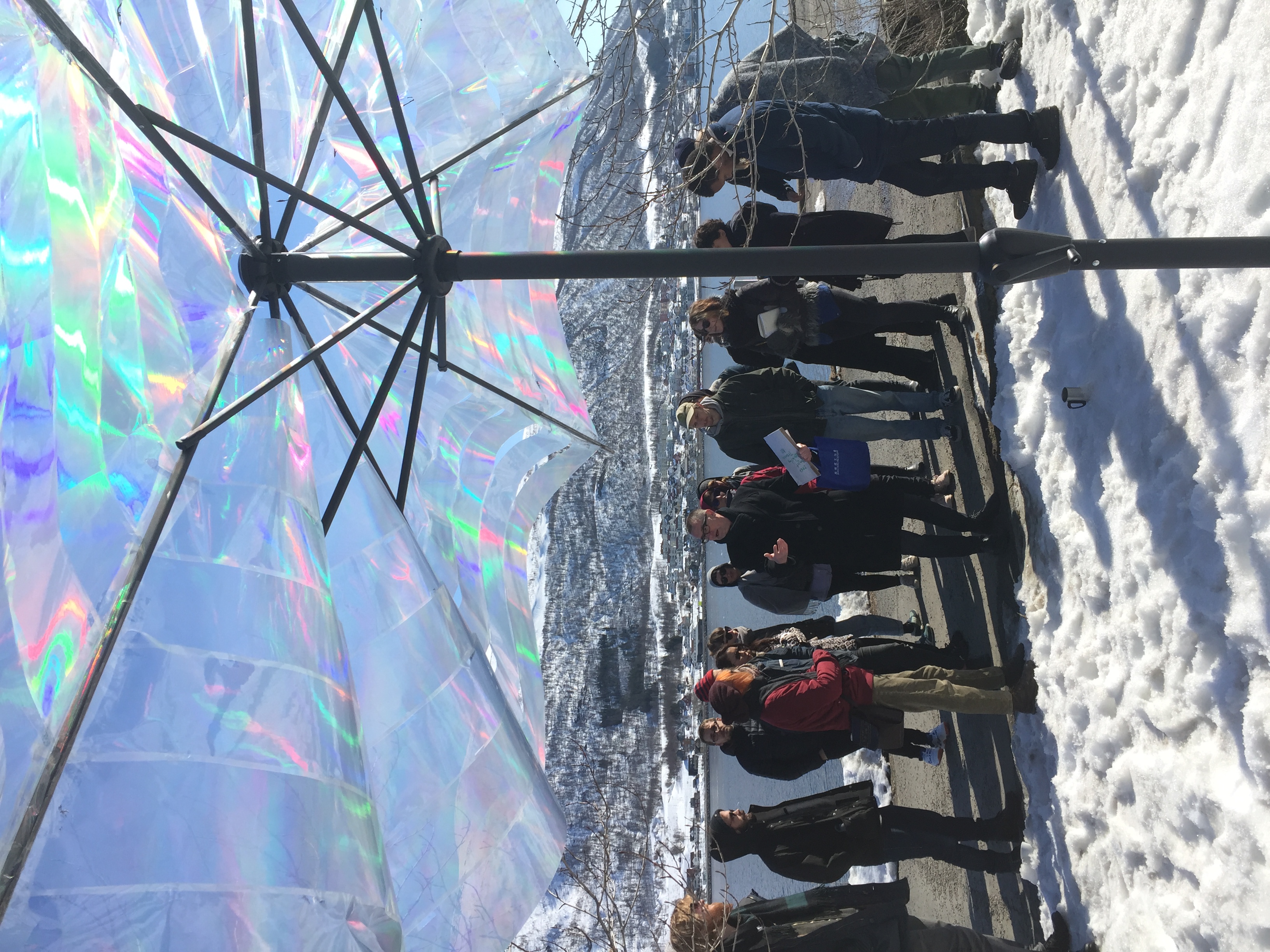
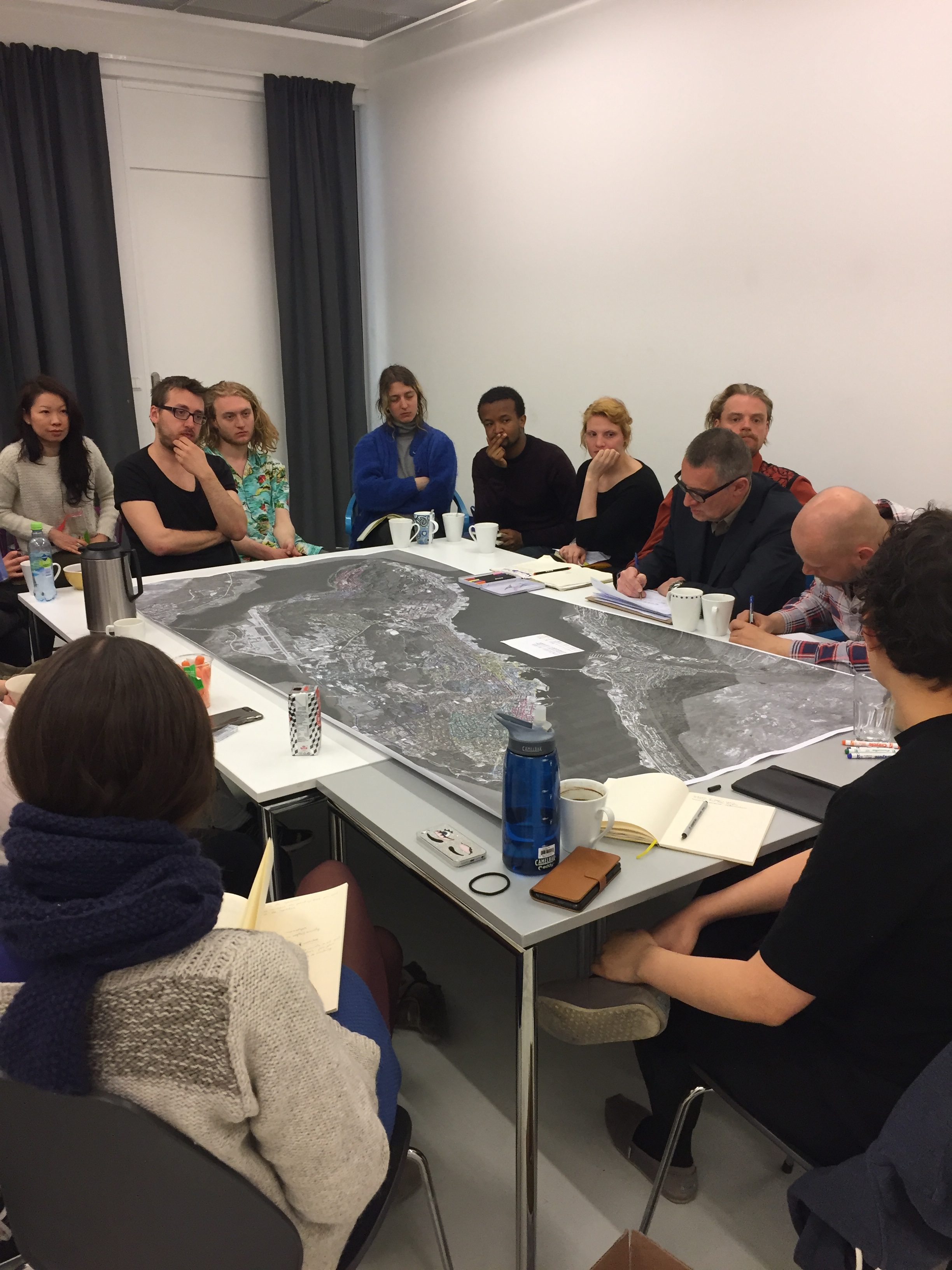
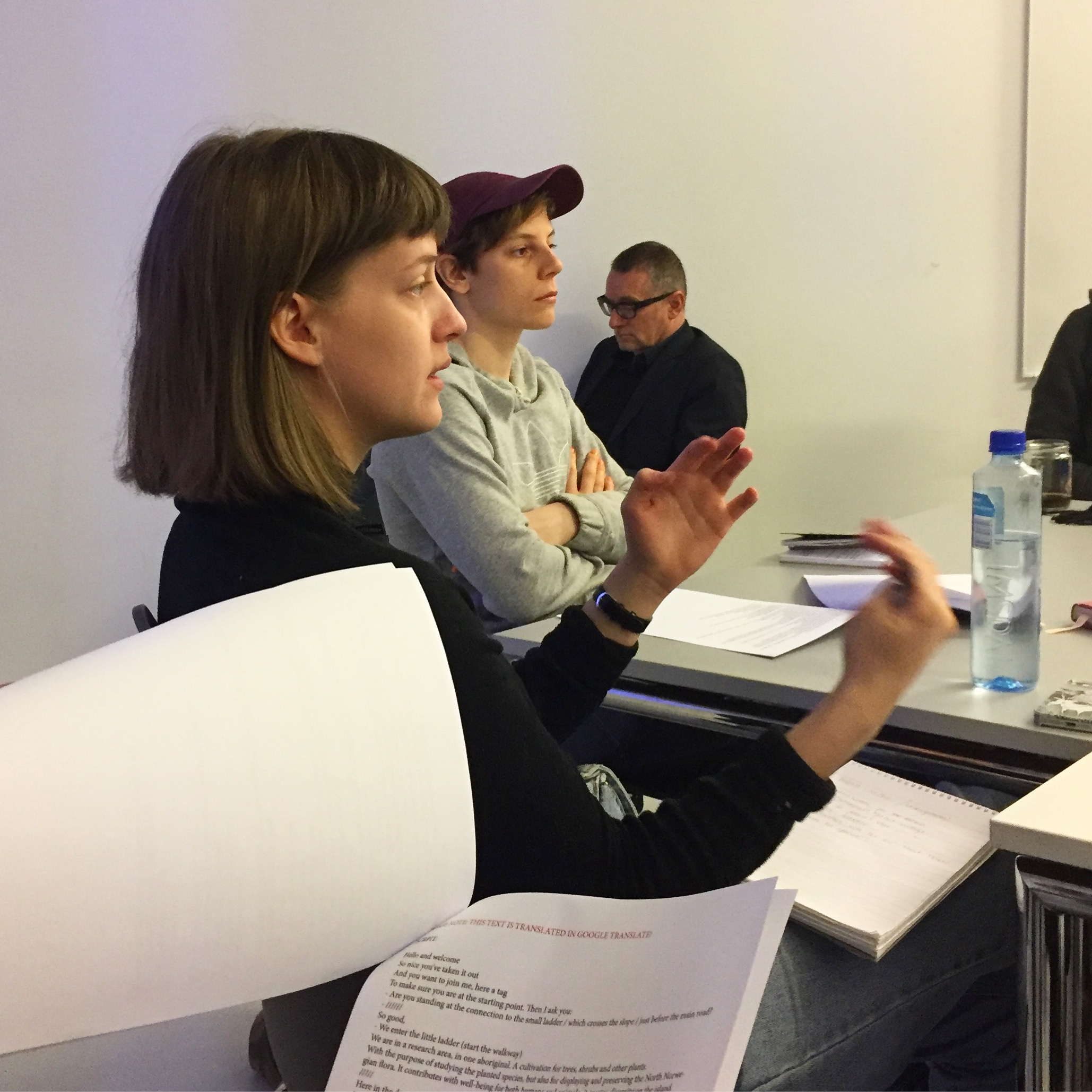
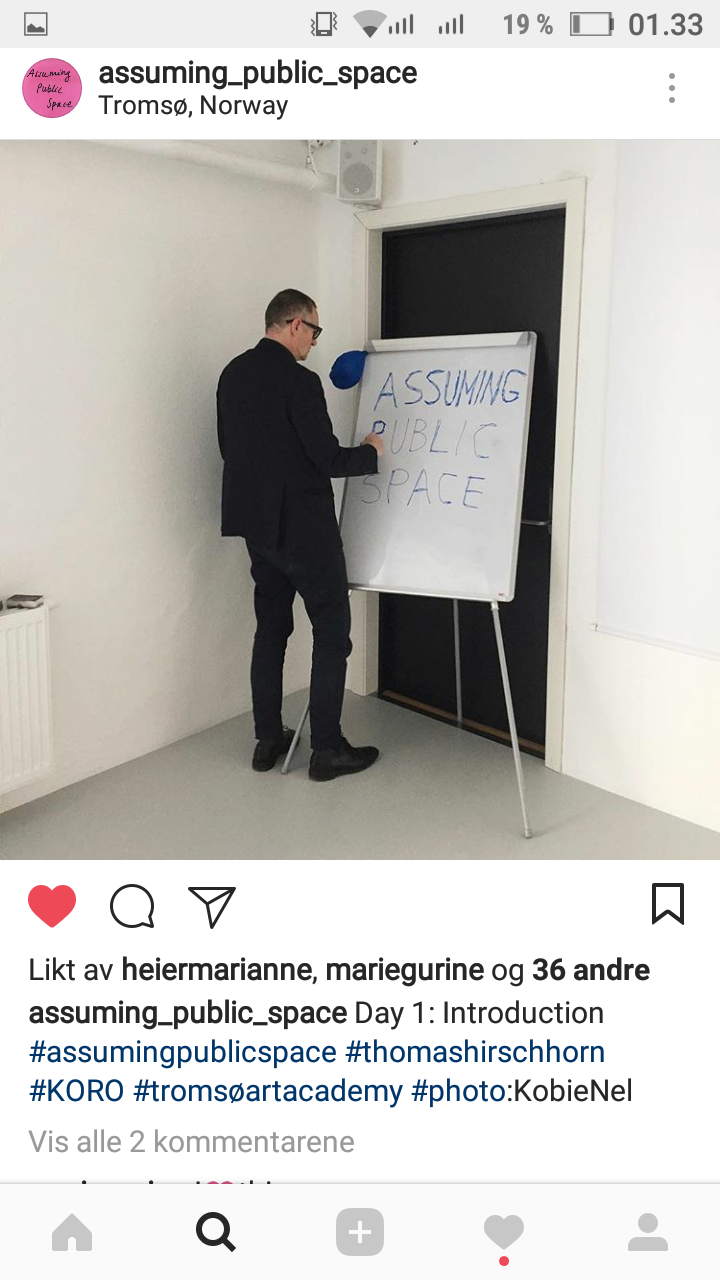

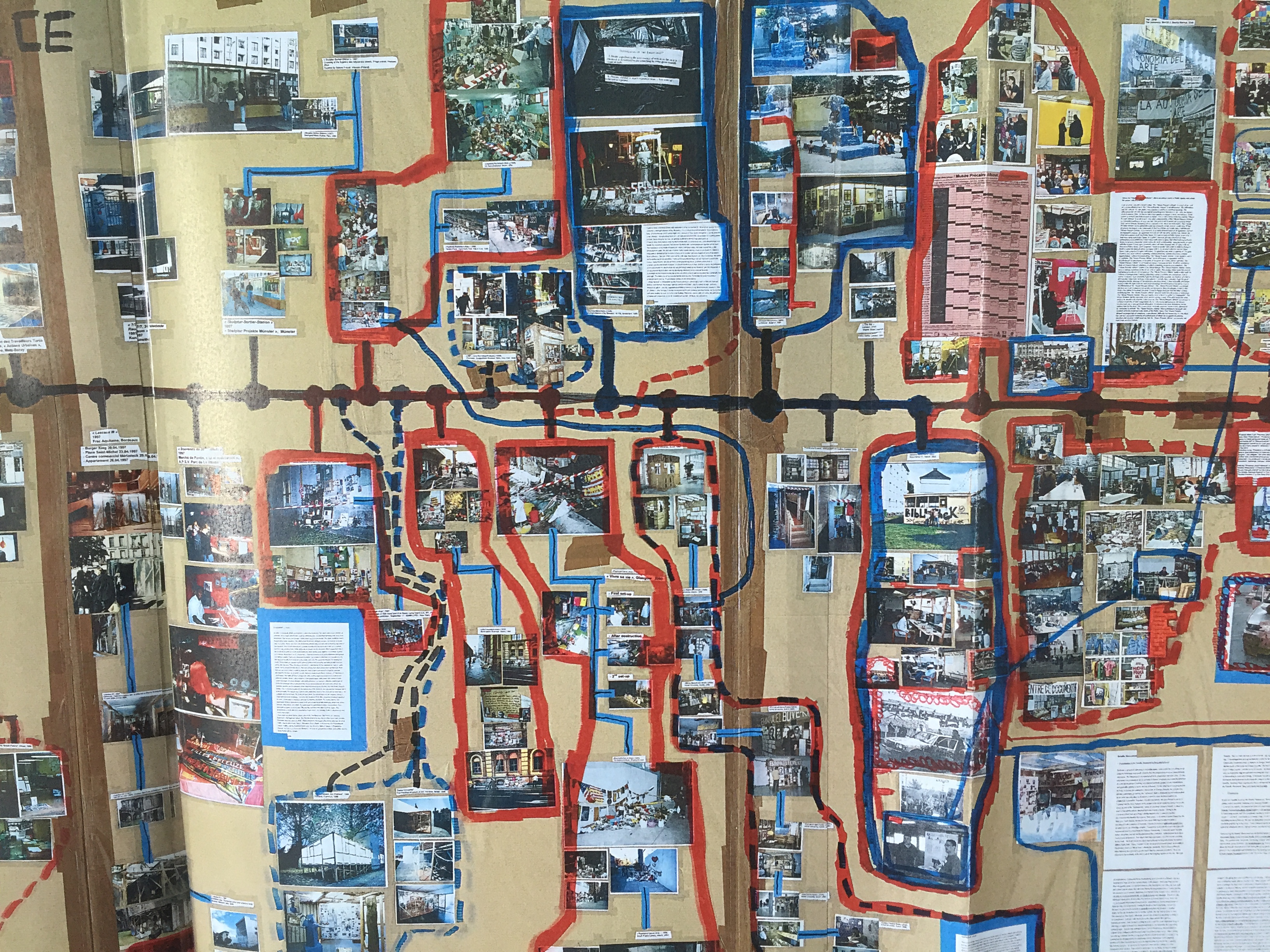
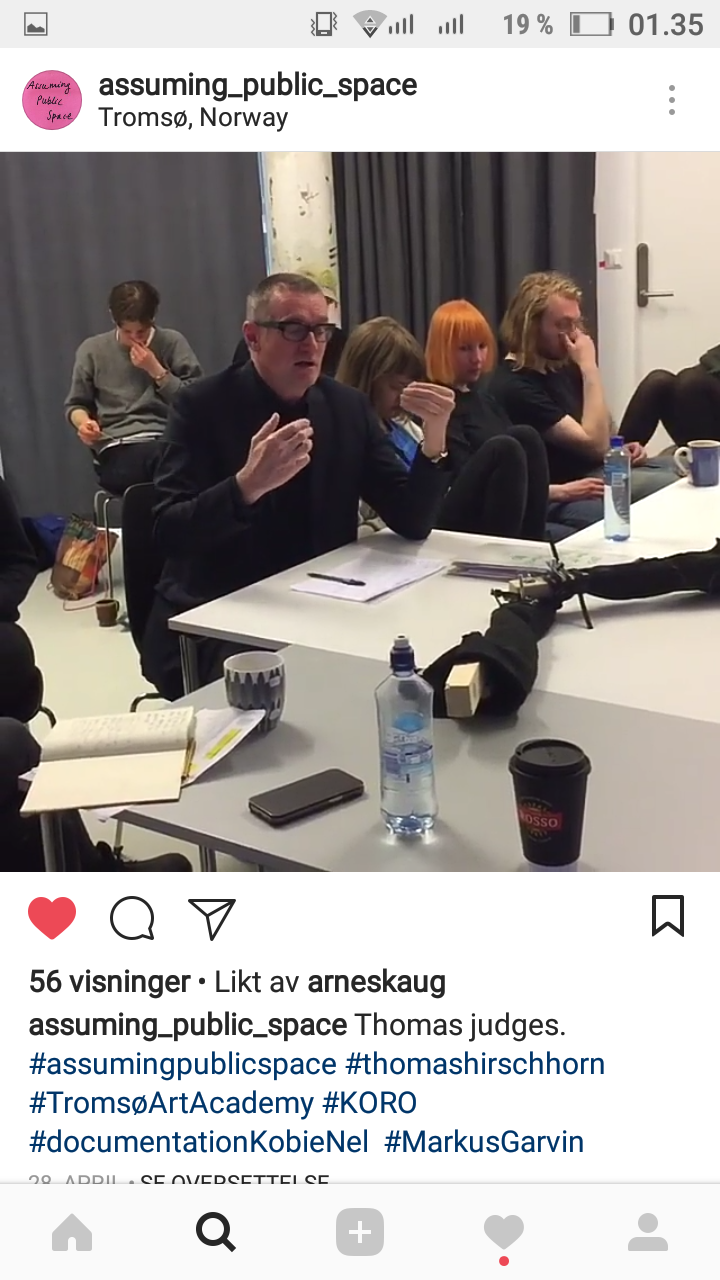

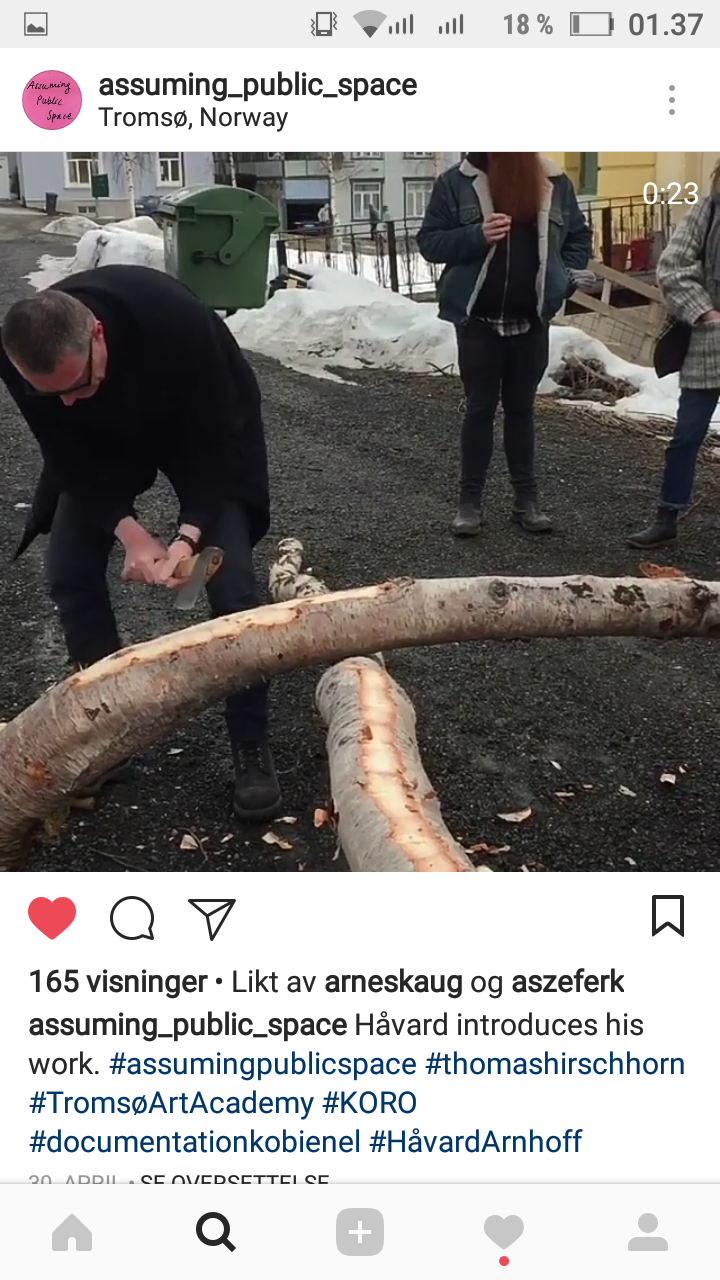


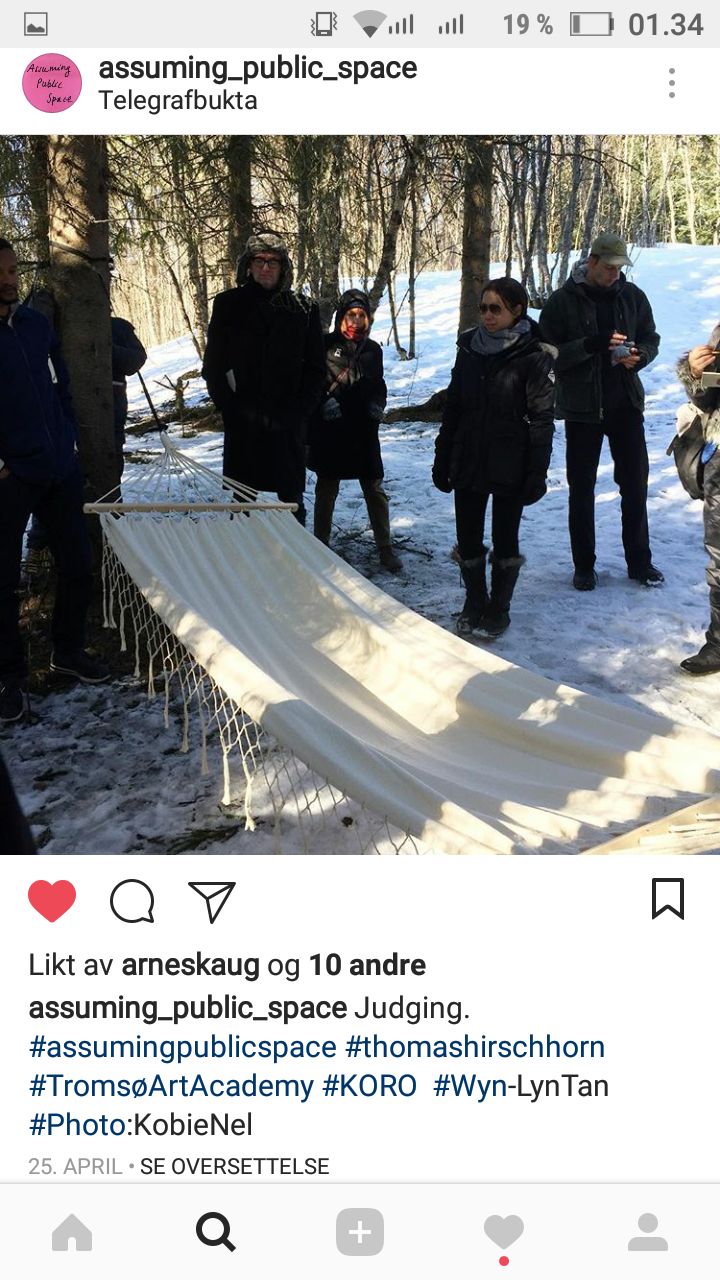




















Om prosjektet
Våren 2017 hadde studentene ved verdens nordligste akademi, Kunstakademiet i Tromsø, besøk av den sveitsiske kunstneren Thomas Hirschhorn. Han var invitert til å gjøre et kunstprosjekt for skolen, og han valgte å arrangere workshopen Assuming Public Space med studentene. De fikk utdelt hvert sitt budsjett og i løpet av et par måneder ble 18 verk realisert i Tromsøs offentlige rom.
Workshop-uken ble delt inn i 18 to-timers økter hvor studentene presenterte verkene sine for resten av gruppen. Hvert arbeid ble evaluert i en kritisk gjennomgang som tok utgangspunkt i spørsmål som: Hva betyr det å jobbe i det offentlige rom og hvilke muligheter gir det? Hvem henvender man seg til og hvem involverer man når man går ut i offentligheten? Hvilke møter og situasjoner oppstår i kunstverket? Tar man som kunstner selv stilling i verket og i så fall hvilken? Og hvordan forholder kunsten seg til folk? Hirschhorn ledet workshopen og delte sine egne erfaringer med å jobbe i offentlige rom.
Notater fra Hirschhorn, dokumentasjon av diskusjonene, fremleggelse av kunstverkene og kunstverkene i seg selv ble dokumentert med video og bilder av Kobie Nel og delt på Instagram mens workshopen foregikk.
Thomas Hirschhorn er en av samtidens mest anerkjente kunstnere og han har stilt ut ved en rekke prestisjetunge steder over hele verden. Han representerte Sveits under Veneziabiennalen i 2013.
Under mottoet ”Energi JA! Kvalitet NEI!” er han kjent for å jobbe med enkle og billige materialer som tape, papp, forskjellige folier, sponplater og collager av avis- og magasinutklipp. Arbeidene hans viser et sterkt samfunnsengasjement og han tar opp spørsmål som blant annet hierarkier, estetisk verdi, sannhet og moralsk ansvar. Han har jobbet med flere midlertidige, stedspesifikke ”monumenter”, blant annet dedikert til de fire filosofene Spinoza, Deleuze, Bataille og Gramsci.Disse verkene har en flyktig fysisk form, men er ment å leve videre i det kollektive minnet til de som har opplevd dem.
Kunstprosjektet er ett av 11 i tildelingsrunde 9 (2015-2017) under kunstordningen LES, som er rettet mot statlige etater i private leiebygg og eldre Statsbygg.
Detaljer
-
Adresse
-
Grønnegata 1, 9008 Tromsø
-
Fylke
-
-
Kunstner
-
Ferdigstilt dato
-
30.04.2017
-
Prosjektleder
-
Elisabeth Tetens Jahn
-
Fagkomite
-
Siv Hofsvang
Sverre Gullesen
Thomas Hestvold
-
Byggherre
-
Eiendomsspar AS
-
Varighet
-
Temporært
-
Tilgjengelighet
-
Ikke tilgjengelig for publikum
-
Program
-
Kunst til leiebygg og eldre statlige bygg
Kunstverk
«Assuming Public Space»
Thomas Hirschhorn – Critical Workshop
«Assuming Public Space» is the title but also the mission, the project, the thematic, the idea, the proposition, the vision, the utopia of the workshop. I am proposing a workshop in the Public Realm of Tromsø because as an artist this is what I can share: my experience and my position. My competence – as far as I know – is the competence to include the non-exclusive audience, and also to work in Public Space. I have made 67 works in Public Space so far, with further projects to come. Therefore my competence comes from my artwork and my concrete experience of confronting Public Space, and from my ability to create the conditions for implication, for seriousness, for equality of treatment and for fun. The workshop I propose in Tromsø will be a critical workshop, based on equality, judgment and discussion, dense, charged, and collective. A critical workshop seems to me the appropriate way to give, to give an input, to transmit, to transmit my experience.
Practically: – The critical workshop «Assuming Public Space» will take place at the Academy of Tromsø, Norway. – The critical workshop will be led by me and will last for a week from Monday to Sunday (7 days). Possible dates are Monday April 23rd – Sunday May 1st 2017 (option 1), or Monday June 5th – Sunday June 11th (option 2). (I arrive in Tromsø on Sunday and leave Monday morning). – In preparation of the workshop, I will come for a short visit ahead to meet the students and present the workshop, and I propose to give a lecture about a work of mine in Public Space. (See calendar for 2 day-visit options). – All students of the ‘Academy of Contemporary Art and Creative Writing’ Tromsø can participate. – Each student will have to make a new specific work of art in the public space of Tromsoe and participate in all our collective discussions and critiques. – Every work made for the workshop «Assuming Public Space» will be discussed together.
Structure of the workshop It is important that the workshop be based on equality. Equal presentation-time, equal discussion-time. During the 7 days of the workshop everyone participating shall present the work he has done in public space, or invite everyone to see the work taking place or performed in public space. (I will further explain this during my preparatory visit). Each work is discussed together, in its outcome and consequences. The work will be judged through questions and debate such as “Is there implication?”, “Is it an event?”, “Are there encounters?”, “Does it create a new term in art?”, “Is there a position in the artwork towards its location, toward its dedication, toward its duration, toward its thematic?”
Production: In order to produce the work I have included in the workshop-budget an amount (30 000 €) for the production of the work, that will be distributed equally between each participant. If there are 20 participants, each student will receive 1 500 €, if there are 10 participants each one will receive 3 000 €. It is therefore necessary that every student participating in the workshop sign-in ahead in order to organize and distribute the production fee between all participants.
Presence: In order to make the best of the other’s judgements, everyone participating must be present full time and attend every presentation. Every work is discussed together. It is important that each work be discussed in equality, therefore the time will be equally divided between all participants. The workshop will last a full week from Monday to Sunday, 3 hours in the morning from 10am-1pm, and 3 hours in the afternoon from 2-5pm.
Requirements: To participate, it is necessary that everyone: – do a new and specific work in Public Space – present ones’ own work (mission, goals) – use the production-fee in an appropriate way and justify expenses with a budget – engage in common discussions, in exchange, thinking, judging.
Goals of the workshop “Assuming Public Space”: – encourage doing a work in public space – determine the pertinence of a work in Public Space – be ready to have one’s work judged – have the generosity to judge the work of others – trust ones’ own – very own – judgement.
Judgement Criteria I expressly use the term ‘judgement’ and don’t use the term ‘evaluation’. A lot is being produced in all kinds of fields, but few people accept the judgement of their production. But an artist or anyone who has the power to produce something, must be ready to accept that his production is being judged. Besides, a judgement – at the opposite of an ‘evaluation’ – is an engagement, something absolute, something which comes from the heart, something you can think about and build upon. In order to resist evaluation and be subject to it, we need to work out our own judgement on our own work, and on the work of others as well. Contributing to an evaluation is not important – but having one’s own personal judgement is essential, as an artist, but also as a human being. To me, ‘judgement’ is a positive term, but I am aware that it is often used negatively. Judging a work is never judging the person. Judging a work (my work/the work of others) is one of the keys to giving form, and facing this judgement is one of the keys to asserting form. Asserting form is the most important thing in Art. My criterion of judgement is «Energy: Yes! Quality: No!». I want to assert what has energy for me – I do not want to judge the quality of something. I don’t want to tell the other what should have quality for her or for him. My judgement is never personal, I only judge the work and its output. I want to show that if you do something, you will be judged for what you are doing. And, as part of the act of doing something, the judgement of this doing has to be held out – this is the grace. I am happy if my work is judged.
